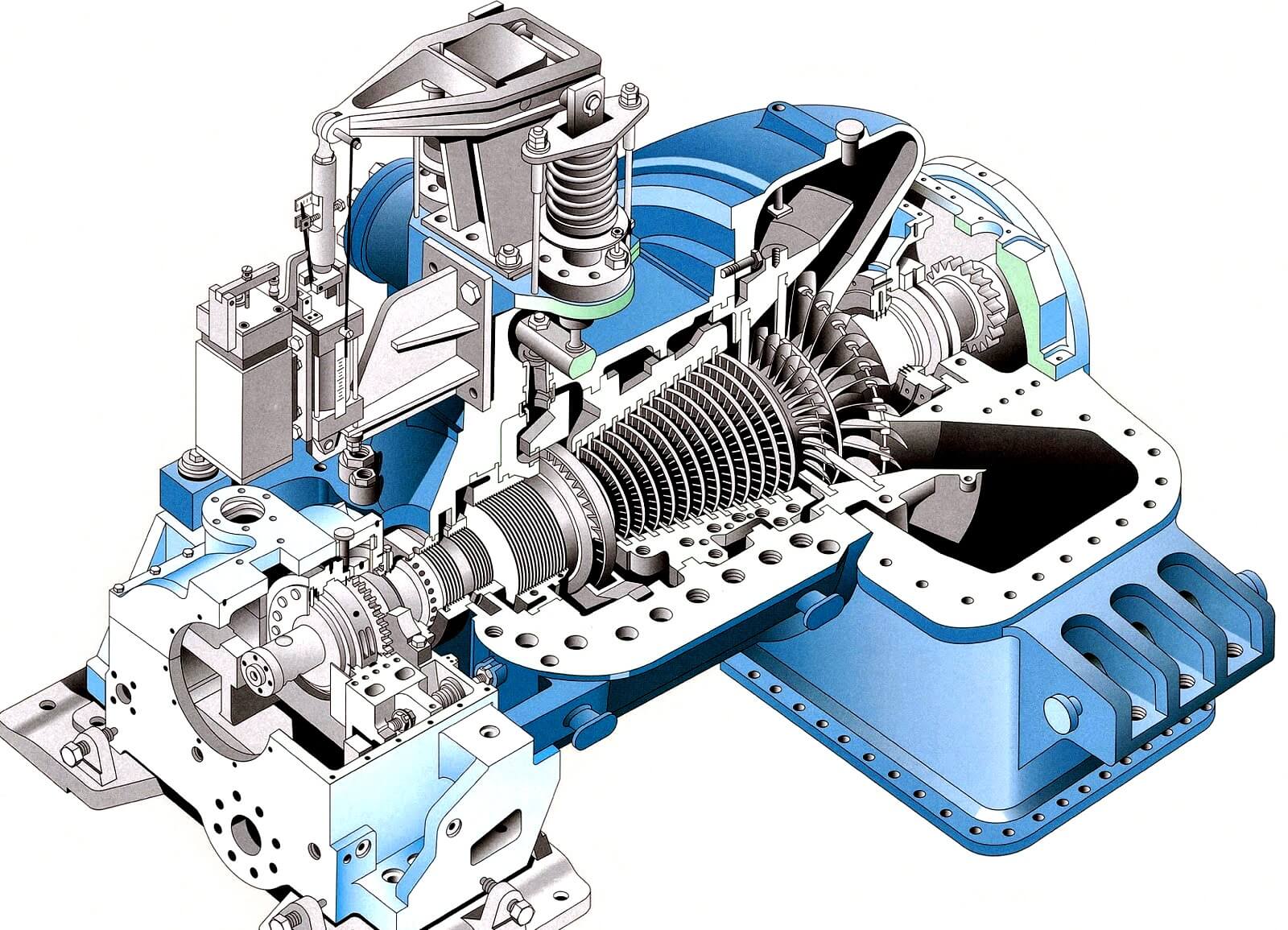A steam turbine is an engine in which the thermal energy of the steam is converted into mechanical energy of rotation.
In steam turbine the energy of the steam is transferred into kinetic energy by expansion through nozzles, and the kinetic energy of the resulting jet is in turn converted into force doing work on rings of blades mounted on a rotating part.
The steam turbines are classified based on many factors like exhaust condition, stage design, steam flow, shaft design, types of drive etc.

The below list shows the detailed classification of steam turbines.
Steam turbine develops mechanical work by converting heat energy into work in the steam expansion. The heat energy is converted in two steps. The steam expands in nozzle and expands at a high velocity, converting the available heat energy into velocity energy. The high velocity steam strikes moving blades, converting the velocity energy into work.
In which the conversion of the kinetic energy to mechanical work occurs with a single expansion of the steam in the turbine. A turbine stage consists of a stationary set of blades called as nozzles, and a moving set adjacent thereto, called buckets or rotor blades. These rotating and stationary blades act together to allow the steam flow to do work on the rotor.
In which the conversion of the energy occurs with two or more expansions of steam within the turbine.
In impulse stage the steam expands only in the fixed nozzles and kinetic energy is transferred to the rotating buckets as the steam impinges on the buckets while flowing through the passage between the buckets. The steam pressure is constant and the steam velocity relative to the bucket decreases in the bucket passages.
The steam expands in both the fixed nozzles and the rotating buckets. The kinetic energy is transferred to the rotating buckets by the expansion of the steam in the passages between the buckets. The steam pressure decreases as the steam velocity relative to the bucket increases in the bucket passages.
Lube oil consoles of rotary equipment packages in industrial process plants are usually equipped with…
Rotating equipment packages such as pumps, compressors, turbines need the lube oil consoles for their…
This article explains how to blink lights in ladder logic with a detailed explanation video…
In this article, a simple example will teach you the conversion from Boolean algebra to…
In this article, you will learn the PLC cooking timer example for kitchen automation using…
Learn an example PLC program to control a pump based on level sensors using ladder…